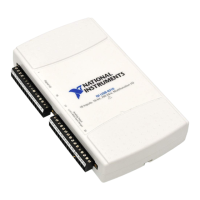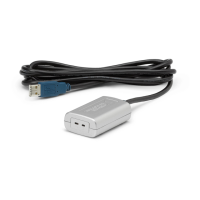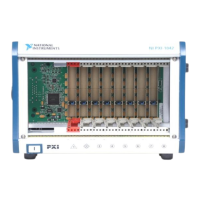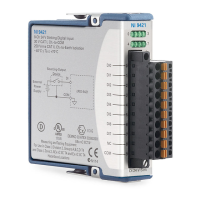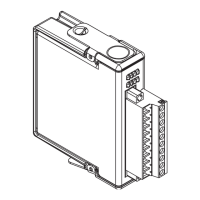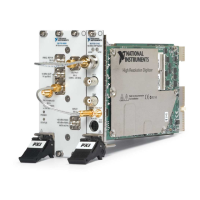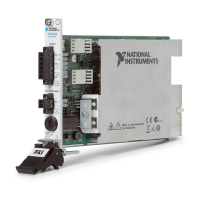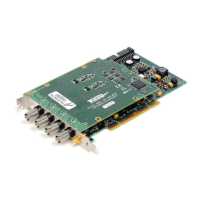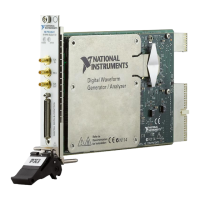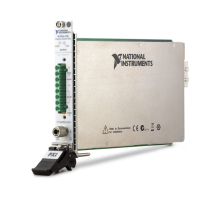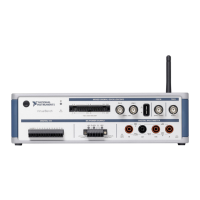Chapter 4 Analog Input
NI USB-621x User Manual 4-26 ni.com
Differential input connections are recommended for greater signal integrity
for any input signal that does not meet the preceding conditions.
In the single-ended modes, more electrostatic and magnetic noise couples
into the signal connections than in differential configurations. The coupling
is the result of differences in the signal path. Magnetic coupling is
proportional to the area between the two signal conductors. Electrical
coupling is a function of how much the electric field differs between the
two conductors.
With this type of connection, the NI-PGIA rejects both the common-mode
noise in the signal and the ground potential difference between the signal
source and the device ground.
Refer to the Using Referenced Single-Ended Connections for Floating
Signal Sources section for more information about referenced single-ended
connections.
When to Use Non-Referenced Single-Ended
Connections with Floating Signal Sources
Only use non-referenced single-ended input connections if the input signal
meets the following conditions:
• The input signal is high-level (greater than 1 V).
• The leads connecting the signal to the device are less than 3 m (10 ft).
Differential input connections are recommended for greater signal integrity
for any input signal that does not meet the preceding conditions.
In the single-ended modes, more electrostatic and magnetic noise couples
into the signal connections than in differential configurations. The coupling
is the result of differences in the signal path. Magnetic coupling is
proportional to the area between the two signal conductors. Electrical
coupling is a function of how much the electric field differs between the
two conductors.
With this type of connection, the NI-PGIA rejects both the common-mode
noise in the signal and the ground potential difference between the signal
source and the device ground.
Refer to the Using Non-Referenced Single-Ended Connections for Floating
Signal Sources section for more information about non-referenced
single-ended connections.
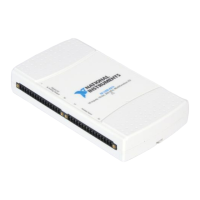
